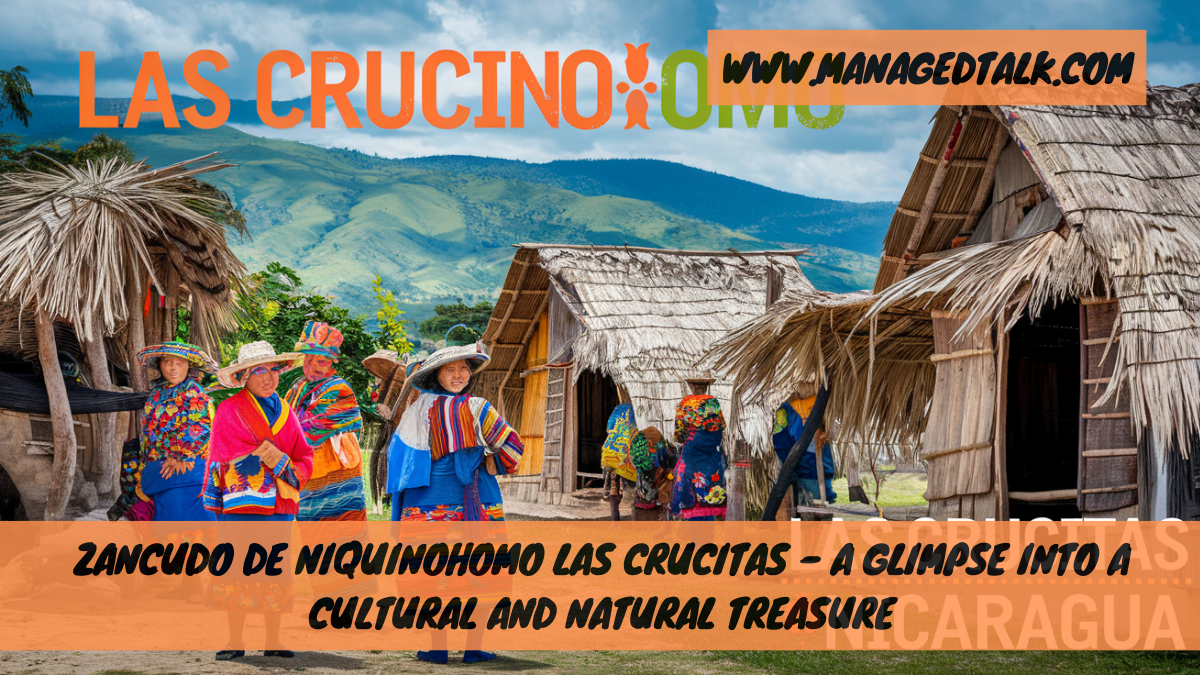1. Introduction to “Zancudo de Niquinohomo Las Crucitas”
“Zancudo de Niquinohomo Las Crucitas” is a term that holds cultural and geographical significance, referring to a unique region in Niquinohomo, a town nestled in the highlands of Nicaragua. Known for its breathtaking landscapes, rich biodiversity, and cultural heritage, Las Crucitas is a popular spot for locals and travelers alike.
Explore “Zancudo de Niquinohomo Las Crucitas,” a Nicaraguan region rich in biodiversity, folklore, and natural beauty, where traditional culture intertwines with lush landscapes in a vibrant rural setting.
The term “zancudo,” meaning “mosquito,” carries historical and environmental implications for the region, referencing both the local fauna and, in part, the ongoing relationship between the area’s ecosystems and its people.
2. Historical and Cultural Background
The region of Las Crucitas in Niquinohomo is steeped in history, with the town of Niquinohomo itself dating back to pre-Columbian times. Originally inhabited by the indigenous Nicarao people, Niquinohomo became a center for Spanish colonial activity in the 16th century, leaving behind a blend of Indigenous and Spanish cultural influences that continue to shape the area. “Zancudo” in local legend reflects a tale where early settlers and Indigenous tribes coexisted with nature, including adapting to the presence of the zancudo (mosquito) population that thrived in the area.
3. Natural Beauty of Las Crucitas
Las Crucitas offers some of the most scenic views in Nicaragua. With rolling hills, dense forests, and fertile valleys, the area is abundant in native plants and trees, which form part of the larger Nicaraguan highlands’ unique ecosystem. Walking trails and viewpoints provide an immersive experience for visitors, offering glimpses of the local wildlife, which includes numerous bird species, small mammals, and, of course, the infamous zancudo.
4. Local Flora and Fauna
The diversity of flora and fauna in Las Crucitas is one of its greatest treasures. The region supports an array of native plants like the mahogany and laurel trees, as well as endemic flowering plants. This biodiversity makes Las Crucitas an ecologically significant location in Nicaragua, providing a habitat for the zancudo as well as other essential insects, birds, and animals that contribute to a balanced ecosystem. Seasonal migrations also bring in a variety of migratory birds, making it a hidden gem for birdwatchers and naturalists.
5. Folklore and Traditions
The people of Niquinohomo and Las Crucitas have preserved many cultural practices passed down through generations. Festivals celebrating local legends, including those surrounding the zancudo, reflect the town’s deep respect for nature. The legendary figure of Augusto César Sandino, a Nicaraguan revolutionary hero from Niquinohomo, adds to the town’s cultural importance, symbolizing resilience and national pride. Las Crucitas’ folklore also includes tales of spirits and natural guardians believed to protect the land and its biodiversity.
6. Economic and Ecological Significance
The agricultural land surrounding Las Crucitas is important for the local economy, with coffee, maize, and beans being primary crops. Sustainable farming practices are essential to preserve the biodiversity of the area. The natural landscape attracts eco-tourists, and sustainable tourism has become a source of income for locals. This economic significance has prompted locals to work alongside environmentalists to ensure that the beauty and resources of Las Crucitas are preserved.
7. Conservation Efforts and Sustainable Tourism
As a region rich in biodiversity, Las Crucitas has been the focus of numerous conservation efforts. Sustainable tourism initiatives aim to protect natural habitats while educating visitors on the importance of biodiversity. Programs encouraging reforestation and the protection of native species are also in place. Conservationists work closely with the community to balance ecological health with tourism, providing eco-friendly lodging, guided tours, and educational programs that help tourists appreciate the natural and cultural wealth of Las Crucitas.
8. Visiting Zancudo de Niquinohomo Las Crucitas
Traveling to Las Crucitas offers a rare chance to experience rural Nicaraguan life and observe traditional agricultural practices firsthand. Local guides often provide tours of the area’s farms, forests, and nature trails, where visitors can learn about sustainable practices. For those interested in history, the town of Niquinohomo is home to museums and monuments dedicated to local heritage. Tourists are advised to carry mosquito repellent, as the zancudo population can be prominent in certain seasons.
9. Conclusion
The region of “Zancudo de Niquinohomo Las Crucitas” is a captivating blend of natural beauty, history, and tradition. From its lush landscapes to its cultural festivals, Las Crucitas represents Nicaragua’s rich heritage and commitment to preserving its natural resources. Whether you are a nature lover, a history enthusiast, or simply in search of an authentic Nicaraguan experience, Las Crucitas promises a visit filled with discovery and cultural immersion.
FAQs
- What is “Zancudo de Niquinohomo Las Crucitas”?
- It refers to a unique area in Niquinohomo, Nicaragua, known for its natural beauty, biodiversity, and cultural heritage.
- Why is the area called “Zancudo”?
- The term “zancudo” (mosquito) reflects both local fauna and the ecological aspects of the region, where mosquitoes are common due to the lush environment.
- Is Las Crucitas a good place for eco-tourism?
- Yes, Las Crucitas offers eco-friendly tours, highlighting sustainable practices and the area’s diverse ecosystem, making it ideal for nature tourism.
- What is the cultural significance of Las Crucitas?
- The area holds a deep connection to Nicaraguan history, indigenous traditions, and the legacy of Augusto César Sandino, adding to its cultural depth.
- When is the best time to visit Las Crucitas?
- The dry season (December to April) is ideal for exploring the region’s trails, but visitors should prepare for mosquitoes year-round.
